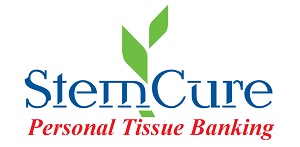
Cryopreserving a small piece of skin tissue today can significantly change your life in the future. The sooner you preserve your tissue, the younger you are, the higher the chance for success!
4 steps to save your tissue sample: |
1. Enroll:
Enter your personal information
Enter your personal information and … More
2. Arrange
an appointment with
your doctor
Arrange an appointment with your doctor… More

What is the advantage of preserving one’s cells today?


What is Cryopreservation?
Cryopreservation is a process where cells, whole tissues, or any other substances susceptible to damage caused by chemical reactivity or the passage of time are preserved by cooling to ultra-cold sub-zero temperatures. At low enough temperatures, any enzymatic or chemical activity (including the aging process in cells) which might cause damage to the material in question is effectively stopped.
How does StemCure acquire and preserve the cells?
To preserve their cells, our clients must go through a simple, painless biopsy procedure in which a small sample of skin tissue is recovered. This sample will be processed, including a safety test for sterility, a test for viability, and tissue cryopreservation. As soon as we complete tissue processing, we distribute the tissues for long term storage in liquid nitrogen at a temperature of approximately –170º C (-274º F). At this temperature, the viability and metabolic characteristics – the biological “age” of the cryopreserved tissue sample – will be stable for decades, waiting for re-thawing for therapeutic use as soon as such opportunities arise.


Long term liquid nitrogen storage.
Depending on the age and condition of the acquired skin specimen, we usually obtain between 6-20 cryovials, which are then separated for security between two different storage locations (as required by StemCure’s Quality Assurance Policy and encouraged by the FDA). StemCure has made every effort to guarantee the safety and security of our clients’ cryopreserved tissue samples. All specimens are protected 24/7 in secure cryostorage facilities with multi-layered temperature monitoring and manifold emergency power sources.
For more details visit:


This company has built the most modern, dedicated storage facilities with the multiple security features – Controlled card scan access to building and monitored security alarm system / Additional controlled access to storage areas / Back-up generators and Automatic Transfer Switch; Back-up freezers for all frozen temperature conditions / CCTV throughout facilities. As well as Central Monitoring System used to monitor storage conditions of all samples and specimens / All monitored data points are stored at 10-minute intervals on site and backed up in the cloud – this data is stored indefinitely / All chambers are monitored by the system with secondary excursion alarms through the security alarm system; System is GMP/GLP/FDA (21CFR Part 11), ISO 19005 and USP 1079 Compliant./ So at this high of a level of storage security, our clients can be sure that their cryopreserved tissue samples will be completely safe and stable for decades, waiting to be re-thawed for therapeutic use as soon as such opportunities arise.

StemCure’s future plans.
StemCure’s long term plans anticipate the future commercialization of the development of stem cells from cryogenically (ultra-cold) stored human tissue. The creation of donor specific stem cells from skin fibroblast cells, although already a well established laboratory procedure, has not yet been safety tested or validated for human clinical use (in worldwide and in the US). Therefore, as a licensed Tissue Bank, StemCure, Inc.’s activities are limited to collection, processing, and long-term storage of skin tissue. StemCure, Inc.’s possession of a New York State license for such collection and long-term storage does not indicate approval or endorsement of possible future uses or future suitability of skin tissue-derived cells.


